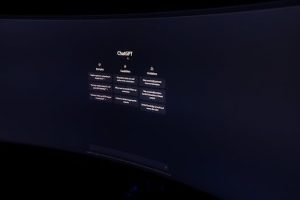Connected Cars: Seamless Updates and Traffic Predictions via 5G
The world of technology is constantly evolving and transforming the way we live, work, and travel. One of the most innovative advancements in recent years has been the emergence of connected cars, equipped with the latest 5G technology. Connected cars go beyond the traditional concept of a vehicle; they are equipped with state-of-the-art features that enable them to communicate with other cars, infrastructure, and devices. Among the many benefits of connected cars, one stands out – the ability to seamlessly update and predict traffic patterns through 5G connectivity. In this article, we will delve into the details of how 5G is revolutionizing the world of automotive with seamless updates and accurate traffic predictions.
What is a Connected Car?
A connected car is a vehicle equipped with internet connectivity and a range of sensors, processors, and connectivity hardware. These vehicles can communicate with other cars, infrastructure, and devices, creating a network of smart and interconnected vehicles. The combination of advanced technology and internet connectivity has transformed the humble automobile into a highly efficient and intelligent mode of transportation.
The Power of Seamless Updates via 5G
Effortless Software Updates
Gone are the days when software updates for cars involved a trip to the dealership or garage. With 5G connectivity, connected cars can receive updates in real-time, making it seamless and effortless. This timely update ensures that the vehicle is running on the latest software, providing a safer and more efficient driving experience. With access to high-speed internet, 5G technology makes it possible to update multiple systems and features simultaneously, such as navigation, entertainment, and safety systems.
Reduced Downtime and Maintenance Costs
In the past, routine maintenance of vehicles could take hours, causing downtime, and resulting in additional costs for the driver. Thanks to 5G enabled connected cars, software updates, and even diagnostic checks can be done over the air, saving time and money. The 5G connectivity allows for seamless and remote access to the vehicle’s systems, reducing the need for manual checks, and minimizing downtime.
Enhancing Vehicle Performance
Software updates in connected cars don’t just focus on improving features and fixing bugs; they also play a significant role in enhancing vehicle performance. With the help of real-time data and advanced algorithms, 5G connectivity enables updates to be tailored to the individual vehicle, optimizing its performance and fuel efficiency. This leads to a smoother and more enjoyable driving experience for the driver.
Accurate Traffic Predictions via 5G
Real-Time Traffic Updates
5G technology brings in an era of real-time traffic updates with the help of connected cars. These vehicles can communicate with each other to provide real-time data on road conditions and traffic patterns. This information is then used to update navigation systems, providing drivers with the most efficient route to their destination. This not only saves time but also reduces fuel consumption and carbon emissions, making driving more environmentally friendly.
Intelligent Traffic Management
The ability of connected cars to communicate with infrastructure and other devices goes beyond just updates and navigation. It allows for intelligent traffic management, where data from connected cars is used by cities and municipalities to monitor and manage traffic flow. By analyzing this data, officials can take appropriate measures to alleviate congestion, reduce accidents, and improve overall traffic management in the city. This is just one example of the potential impact of 5G enabled connected cars on the future of smart cities.
More Efficient Emergency Services
In times of emergency, every second counts, and 5G powered connected cars have the potential to make a life-saving difference. With the ability to transmit data in real-time, these vehicles can alert emergency services of an accident or emergency, providing essential information such as location and severity. This can help reduce response times, saving lives and minimizing damage.
Conclusion
Connected cars, powered by 5G technology, are leading the way in transforming the automotive industry. With seamless and effortless updates, these vehicles are always running on the latest software, reducing downtime and maintenance costs. 5G connectivity also enables accurate traffic predictions, improving navigation and traffic management, and even enhancing emergency services. With the potential to make driving safer, more efficient, and environmentally friendly, it’s safe to say that 5G connected cars are the future of transportation.





